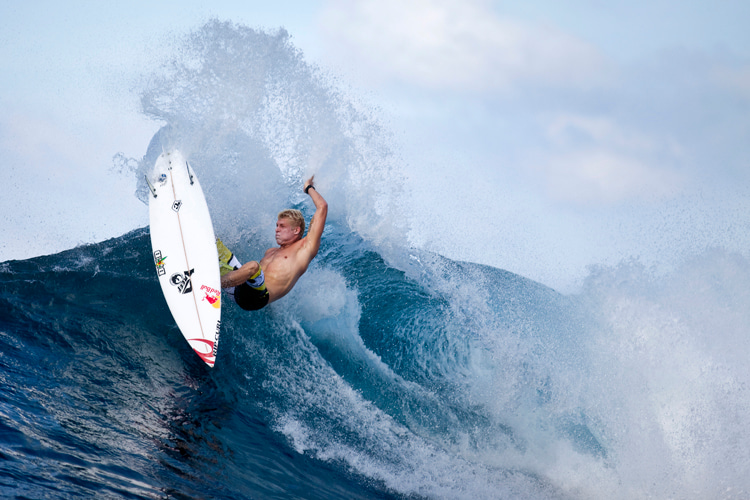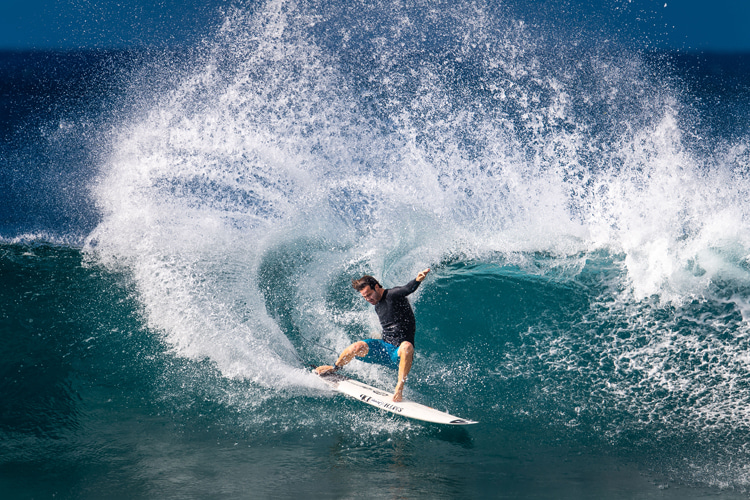It's one of the coolest surfing maneuvers, and it can be performed in almost every type of wave. Here's how to master the layback snap.
If you're an intermediate or advanced surfer, you know that there are few moves you can do simultaneously in small, big, mushy, and steep waves.
The layback snap, also known as layback hack and layback cutback, was popularized in the 1980s.
"The first layback hack that I ever saw was back in the 1970s and was done by the 1976 world champion Peter Townend in the Stubbies Pro," explains the 1988 ASP World Tour champion, Barton Lynch.
"That was the first time that anyone had seen that maneuver and it was something super futuristic."
"Through the 1980s, it was utilized to great effect, and it seemed to disappear for some years but has been reintroduced because surfers are searching for variety in their performance."
"Since then, it has been used with more power and grunt than ever."
In this stylish and timeless trick, the surfer lays down on a wave while doing an abrupt turn, using the body to slow down and bring the surfboard around.
It's the perfect power surfing acrobatics for adding variety and creativity to a well-ridden wave. In competitive surfing, judges tend to appreciate it.
The progressive old-school maneuver is executed on a frontside ride, and obviously, the more spray you generate, the better.
Speed is critical. You'll need plenty of forward momentum to drive through the whole arc of the turn.

Layback Snap 101
Here's how to do a powerful and striking layback hack.
- Paddle for a wave with a good open face;
- Take off and perform a really good bottom turn;
- Initiate a diagonal trajectory toward the lip of the wave, and get ready to transition your weight from the center to the back foot;
- As you reach the steeper top part of the wave, extend your front leg and bend your back leg. Your back foot should be as far back on the tail as possible;
- Apply pressure on your back foot and heel to start the turn, letting the fins catch and help pivot. The goal is to push the board away from you;
- Use your front foot to drive the board toward the beach;
- As the rotation begins, let your back lean backward and open and extend your arms behind your shoulders to compensate for the new weight distribution and increase overall balance;
- Help your body defy gravity by planting your inside arm into the wave while your outside rail carves at 25-45 degrees and points toward the beach. By this time, both legs are slightly bent, and you'll feel like you're sitting on water;
It's easier to perform the layback snap on waves with a good size and a generous, workable wall of water.
The faster you come off the bottom turn, the easier you'll complete the move. Remember that your upper body rotates in the opposite direction of your legs and board during the whole turn.
The Recovery
Now that we've broken down the first part of the maneuver, it's time to focus on the hardest thing - recovering from the layback.
- As your board starts turning toward the pocket, with the rail fully engaged with the water, bring your head and upper core up and toward your knees by pulling your heels back and under you. Your chest should be almost touching your knees as if you were lying on the floor and trying to get up;
- Bring our back knee a bit lower and toward the center of the board to put more weight in the front;
- As the board continues to move toward the breaking section of the board, your body is getting more and more compact, with shoulders and face looking down on the board;
- By the time your inside arm is out of the water, the board will already be flat on the wave;
- Get ready to redirect the nose of the board back into an optimal surf line and resume riding;
The more you practice your layback snap, the better you'll know what pressure to apply and when to start recovering from it.
Remember to execute the maneuver on the steepest part of the lip and to keep your back foot really back on the board.
As always, watching the best surfers pulling it off will surely help you improve the trick.
Clay Marzo, Jordy Smith, Josh Kerr, Mick Fanning, Kelly Slater, and Tanner Gudasukas have performed some of the most eye-catching layback hacks ever.
